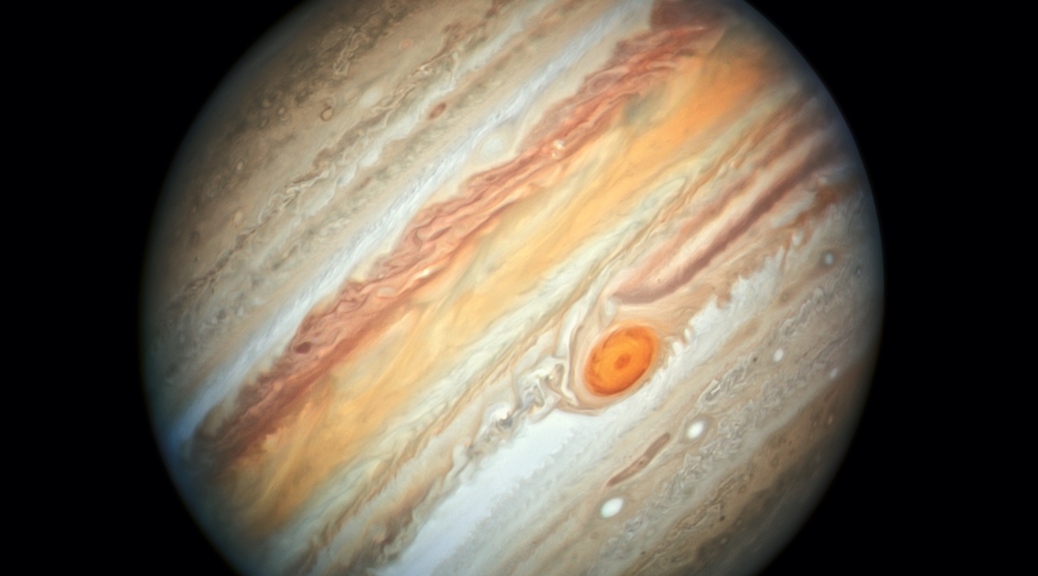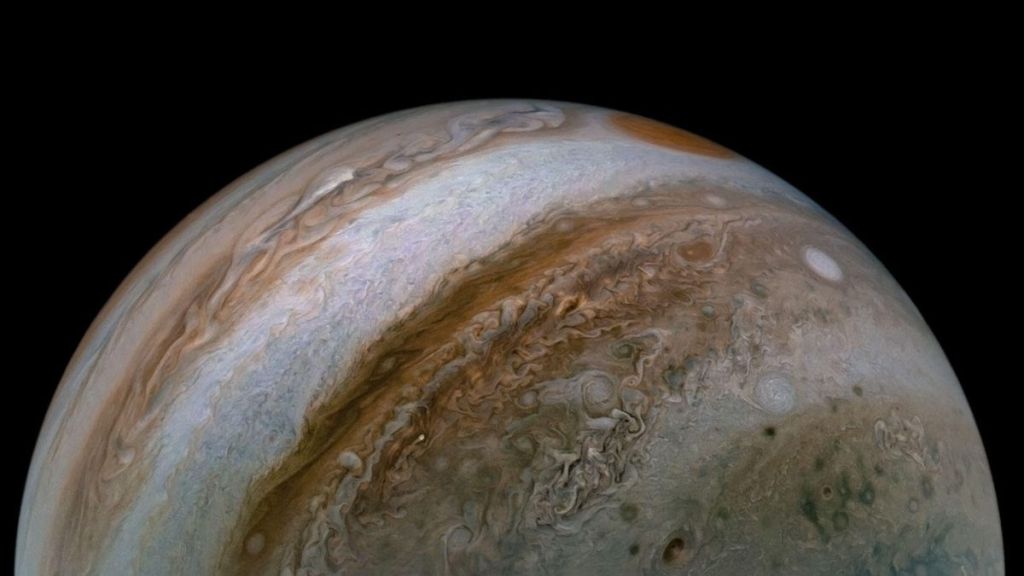With a mass two-and-a-half times that of all the other planets combined, Jupiter is by far the largest planet in the Solar System, earning the well-deserved title of King of planets. Compared to the Earth alone, it is around three hundred times more massive and has a volume exceeding that of our own planet by one thousand-fold.
But that’s not all! Jupiter also stands on the podium as the third-brightest object in the night sky after, well of course the Moon, and Venus. And you don’t need a telescope to spot it, you can easily observe it with the naked eye: it’s so big and bright that you can’t miss it.
Another interesting characteristic is that owing to its fast rotation, the fastest in the Solar System, a day on Jupiter lasts somewhat less than 10 hours…a perfect place to work!
On the other hand, the planet takes slightly less than 12 years to complete its orbit around the Sun; only Neptune takes longer with 164.9 years.
Jupiter is also referred to as “Gas Giant” due to its gaseous composition, mainly hydrogen and helium, which mimics that of a star; and while some heavier metals may be present in its core, the planet has no solid surface or terrain of any kind.
Its upper atmosphere is made of several bands or clouds of different colour and shape, resulting from countervailing winds tearing east and west across Jupiter.
The most recognisable feature is the Great Red Spot, a giant anticyclonic storm with winds peaking at more than 600 km/h. Observed for the past 150 years (probably even longer), it is the largest known in the Solar System: to have a comparable idea of its size, just think that our planet Earth could comfortably fit within it…twice!
With 79 known moons at the time of this article, Jupiter is second only to Saturn (82 moons) in the Solar System; the four largest moons (Ganymede, Callisto, Io and Europa), named “Galilean moons” after Galileo Galilei, the Italian astronomer who first discovered them in 1610, are among the largest satellites in the Solar System: Ganymede, the largest of them, has a diameter greater than that of the planet Mercury.
Of the four Galilean moons, however, Europa is the one that most captures scientists’ attention as it hosts one of the key requirements for life as we know it: liquid water.
In the past 40 years or so, in fact, scientists have found strong evidence leading to believe that underneath the thick ice crust that makes most of Europa’s surface lies an ocean 60 to 150 km deep, which is widely considered the most promising place to look for life beyond Earth in the Solar System!
While, according to scientists, life in this bottomless ocean is most likely to be found in the form of microbes, however, an important question arises: would the inhabitants of Europa be called Europeans?



